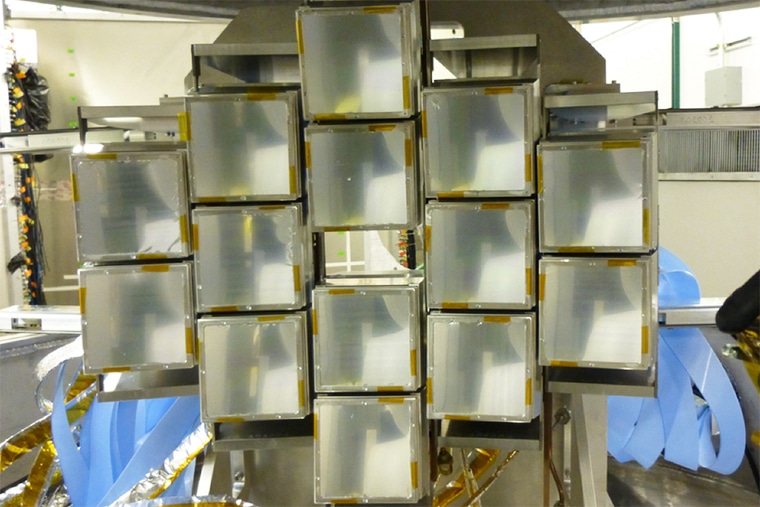Apr 2 2019
A unique form of oxygen called “featherweight oxygen” has been discovered and characterized by scientists at Washington University in St. Louis.
 Nuclear scientists at Washington University discovered oxygen-11 using the High Resolution Array at the National Superconducting Cyclotron Laboratory. (Image credit: Michigan State University)
Nuclear scientists at Washington University discovered oxygen-11 using the High Resolution Array at the National Superconducting Cyclotron Laboratory. (Image credit: Michigan State University)
This “featherweight oxygen” is considered to be the lightest-ever version of the well-known chemical element oxygen, with merely three neutrons to its eight protons.
Although oxygen happens to be one of the most abundant available elements in the solar system, oxygen-11 can be generated only in a laboratory setting. This is because it tends to decay immediately after its production by releasing a pair of protons, and it can only be viewed by detecting its decay products. The most recently identified nuclear decay channel is the two-proton decay.
What is most interesting to the nuclear physics community, however, is that oxygen-11 is the nuclear mirror of lithium-11, a very well-studied heavy isotope of lithium.
Tyler Webb, Study First Author and PhD Candidate, Department of Physics, Arts & Sciences, Washington University
Webb works with Robert J. Charity, a research professor of chemistry in Arts & Sciences, and Lee G. Sobotka, a professor of chemistry and of physics. Webb is also the first author of a new study on the discovery published in Physical Review Letters.
In the field of nuclear physics, nuclei are believed to be mirrors when one has a specific number of protons and neutrons and the other has an opposite amount, for example, oxygen-11 has a 3:8 ratio of neutrons to protons and lithium-11 has an 8:3 ratio of the same.
When talking about mirror nuclei, we expect a sort of symmetry to hold. The properties of a nucleus and its mirror should be similar: Quantum states should be roughly close in energy relative to the nucleus’s ground state and the wave functions of those states should be similar.
Tyler Webb, Study First Author and PhD Candidate, Department of Physics, Arts & Sciences, Washington University
However, this symmetry can either be broken or stretched. Researchers can compare the exact structure of the mirror nuclei against their predicted structure in order to know more about this vital symmetry of atomic nuclei—the material that composes the universe’s visible matter.
In such a case, the investigators are extremely keen to compare lithium-11, which they already know to possess a pair of very loosely adhered neutrons in a “halo” circling its core, to oxygen-11, which has a couple of unbound protons.
The researchers of the Washington University arranged together a proof of oxygen-11 in an experiment that was performed at the National Superconducting Cyclotron Laboratory on the Michigan State University campus.
The experiment as well as the supporting calculations performed by theoretical nuclear physicists Witold “Witek” Nazarewicz and Simin Wang of Michigan State University has been outlined by the Physical Review Letters paper.
The collaboration also involved scientists from Western Michigan University and the University of Connecticut.